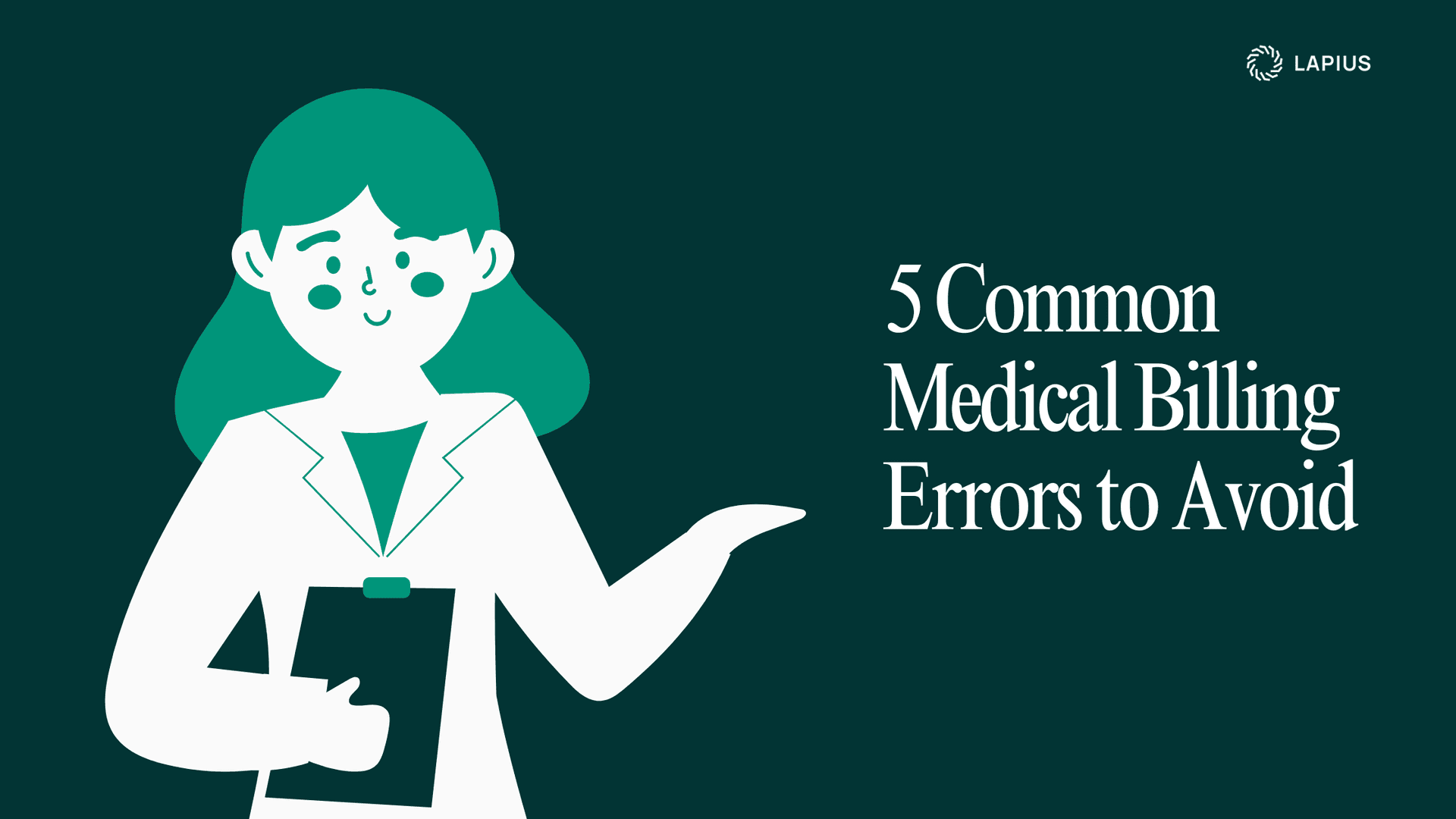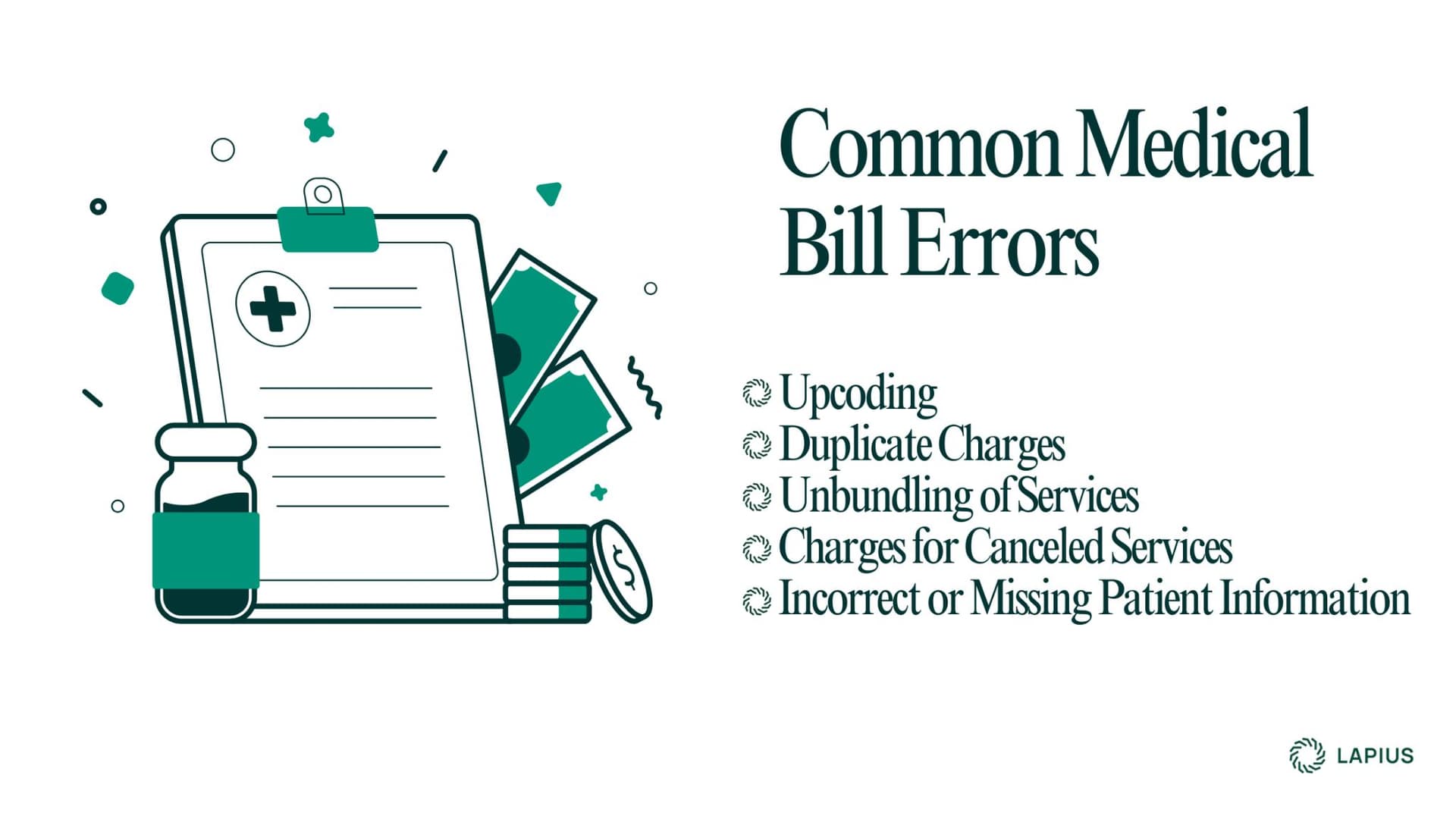5 Common Medical Billing Errors That Cost Patients Thousands—and How to Avoid Them
13 Dec, 2024

Medical bills can be confusing and overwhelming, and it’s not uncommon to find common medical billing errors that inflate costs and leave you paying far more than you owe. Understanding these errors will help you spot medical bill mistakes, dispute inaccurate charges, and ultimately prevent thousands of dollars in unnecessary expenses.
In this guide, we’ll walk through the most frequent and costly medical billing issues—from duplicate charges on medical bills to unbundling services—and show you how to correct them. With the right knowledge and resources, you can protect yourself and ensure you’re only paying for the care you actually receive.
Don’t Just Ask for an Itemized Bill—Request a UB-04
Before diving into the common errors, here’s a crucial tip that can save you time and frustration. If you were treated as an outpatient at a hospital (which is often the case), consider asking for the hospital’s UB-04 form instead of a generic “itemized bill.” The UB-04 is a standardized claim form hospitals use when submitting charges to insurance companies. Unlike ordinary itemized bills, which can vary widely, the UB-04 adheres to a clear, uniform format, giving you a reliable snapshot of every service, code, and charge. By requesting the UB-04 directly, you avoid the back-and-forth of debating what constitutes a true “itemized” bill and get straight to the consistent, standardized details you need.

1. Upcoding
What It Is: Upcoding is when providers bill for a more expensive service than the one you received. For example, a standard follow-up office visit (often coded as CPT 99213) might be billed as a more complex evaluation and management visit (e.g., CPT 99215).
Example: You visited your primary care doctor for a routine follow-up, which should be billed as CPT 99213 (moderate complexity). However, your bill shows CPT 99215 (high complexity), implying a more extensive and costly visit than you actually had.
Why It Costs You: A routine office visit may cost around $100, but a high-complexity consultation could jump to $300 or more, tripling your out-of-pocket expense.
How to Spot It: Match the codes on your bill to the level of service you recall receiving. Use resources like Fair Health Consumer to verify typical costs. If it seems inflated, consider disputing the charge.
2. Duplicate Charges
What It Is: Duplicate charges occur when the same test, procedure, or service is billed more than once. This often happens when different departments fail to coordinate or when billing staff mistakenly submit a charge twice.
Example: You have an MRI of the brain coded as CPT 70551. Your bill shows this MRI charge twice on the same date of service, resulting in double billing for a single procedure.
Why It Costs You: A test like an MRI might cost hundreds or even thousands of dollars. If it’s billed twice, you could be paying double for a procedure you only had once.
How to Spot It: Request an itemized bill and compare it against your insurance Explanation of Benefits (EOB). If you see identical procedures listed multiple times for the same date, contact the billing department immediately.
3. Unbundling of Services
What It Is: Unbundling services involves billing for individual components of a procedure separately when they should be grouped under one bundled code. For example, a Basic Metabolic Panel (BMP), commonly coded as CPT 80048, might be broken down into separate charges for each test—like sodium (CPT 84295), potassium (CPT 84132), and so on—instead of the discounted panel rate.
Example: Instead of seeing one line item (CPT 80048) for the BMP test on your bill, you see multiple line items for each component test. This practice raises your total cost significantly.
Why It Costs You: One bundled test might cost $50, while billing each component separately could push the total to $100 or more.
How to Spot It: If your bill lists multiple lab test codes that look like they belong together, call the billing department and ask if these should be bundled under a single code.
4. Incorrect or Missing Patient Information
What It Is: Even a small clerical error—like a typo in your name, date of birth, insurance ID, or procedure code—can lead to claim denials or inaccurate charges.
Example: Your last name is spelled incorrectly, or your insurance member ID is off by one digit. Your insurer rejects the claim, forcing you to pay out-of-pocket until the error is corrected.
Why It Costs You: If your insurance denies coverage because of mismatched information, you might have to pay the entire bill upfront—potentially hundreds or thousands of dollars—until the issue is resolved.
How to Spot It: Double-check every detail on your bill and EOB. Ensure that all personal and insurance data matches your records exactly. If something’s off, contact the provider’s billing office.
5. Charges for Canceled Services
What It Is: Sometimes, tests or procedures that were never performed still show up on the bill. This can happen if a cancellation wasn’t recorded properly in the billing system.
Example: A scheduled MRI (CPT 70551) or a minor surgery (e.g., CPT 10060 for a simple abscess drainage) was canceled but not removed from the billing system.
Why It Costs You: Paying for services you never received is essentially throwing money away. An expensive canceled outpatient procedure left on the bill can cost you thousands needlessly.
How to Spot It: Review your medical records and appointment history. If you see a service you didn’t receive, call the provider’s billing department and have it removed.
How to Prevent and Dispute Medical Bill Errors
- Request an Itemized Bill or a UB-04: An itemized statement breaks down every charge, making it easier to spot mistakes.
- Compare with Your EOB: The EOB from your insurer shows what they covered and what’s left for you to pay.
- Look Up Medical Codes: Websites like Fair Health Consumer help you confirm that codes match the services you received.
- Contact the Billing Department: Don’t hesitate to call and ask for clarification or dispute questionable charges.
- Seek Assistance if Needed: Consider hiring a medical billing advocate or consulting consumer advocacy groups.
Ready to Take Control of Your Medical Bills?
Overpaying due to common medical billing errors doesn’t have to be your reality. By understanding how to spot medical bill mistakes and taking proactive steps to verify every charge, you can save yourself thousands.
Staying informed and proactive is the best way to prevent hidden charges from sneaking into your bill. After all, healthcare should help you feel better—not break the bank.
Sign up for our waitlist today by clicking on the Get in Touch
button on the top right to be one of the first notified when the Lapius platform launches—helping you catch billing errors, avoid overcharges, and take control of your medical expenses.